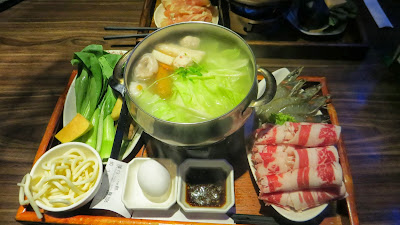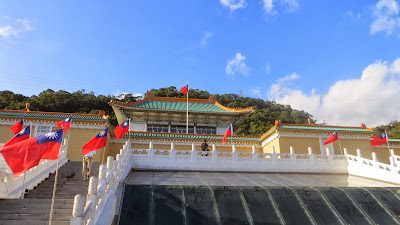In May and July, Ana and Simon have shared with you a few
bits and pieces what it means to live in Singapore. The time they have in
Southeast Asia is now coming to an end and there shall be a few data points added
to the picture you (and they) have gained about Singapore over the course of the
year.
Efficiency
Oh how much cliché and stereotype exists in the world? How
much are Western media talking about the hard working people in Asia, the ease
of doing business in Singapore?
Well, let’s face it – there is a lot of data that supports this idea. Ana had
her working pass in less than two weeks. Simon’s appointment with the student
visa authority (that he scheduled online) ended 2 minutes before the scheduled
time – good that he was there early. The metro is very efficient and trains are
coming when the systems says they will be coming. And the best thing,
especially for living as a foreigner in this tiny island, is the automated
immigration process. As Ana and Simon are both legal residents of Singapore
(while they are holding employment / are studying), they can use the automated
border control systems. Their passports (the foreign ones!) are linked to their
resident status and as such, they can be used at the electronic gates. You scan
the passport, one gate opens, you enter, the first gate closes, you have to
scan your fingerprint and then the second gate opens and either off you go or
you are back in Singapore.
The nice touch: When you leave Singapore,
the screen will say: “Bon Voyage, XXX” and when you arrive it reads: “Welcome
to Singapore,
XXX”.
 |
| Just enough space on the screen for all of Simon's names |
Having said that, there are also things that do not work
very efficiently. This is often related to the fact that people are following
their guidelines / process rules without ever questioning their applicability.
This was true when Simon had to go to the bank twice as they said that the
signatures at different locations of the document were not similar enough and
he had to explain: “You may be surprised to hear that but it is actually not
the first time I sign a document.” Also, when they order food in restaurants,
it happens frequently that the starter and the main dish come at the same time
or – even better – the main dish before the starter. But the order was given at
once, the main dish was faster to prepare and then, this is what you get…
The wild Singapore
Everyone thinks of Singapore as a city state. Thus,
you may consider it as a city, maybe with a few parks but almost entirely
built-up. Well, this is not true. Despite the fact that more than 5 million
inhabitants live on a size smaller than the city of Hamburg or the Spanish
island of Lanzarote there is surprisingly a lot of green and some of it even
“wild”. It took Ana and Simon some time to find these places but they were very
impressed when they climbed Bukit
Timah Hill, Singapore’s
largest (natural) elevation – there are many buildings that are taller. The
hill is almost in the geographic center of the island and you do not hear any
city sounds and you could also believe that you are somewhere in the jungle of
neighboring Malaysia.
There are even a bunch of monkeys.
 |
| The wild side of Singapore |
 |
| Even abandoned train stations could be discovered |
 |
| Ana and Simon crossing an old railway bridge |
 |
| Wild monkeys in Singapore |
 |
| International travel expedition reaches the top |
Also the zoo is something really
spectacular. Without visible barriers, you may find an Orang Utan above your
head, letting a banana peel fall on your head. Definitely worth a visit.
 |
| Two lions "hanging out" |
 |
| Coolest chimp in town |
Singapore
getting excited
In terms of stereotypes, it is also true that Singaporeans
do not often show their emotions in public. This is true at work, at INSEAD and
almost everywhere else where you find many people at once. They do get excited
about food (as shared in the first update on Singapore in May) but that is not
necessarily observable for the visitors. The closest that a foreigner could
feel Singaporeans to get excited and proud of their country (with the exception
of the taxi driver asking in Singlish: “How like Singapore-lah? Everything safe
and clean!”) was during the Formula 1 Grand Prix. Being a place not short of
setting new standards and landmarks, Singaporeans took pride in having the
first night race and obviously the skyline of Singapore provides quite an
impressive background. The weeks leading up to the event, there would be F1
race cars in bank buildings on Ana’s way to work, bleachers being built up and
F1 parties announced everywhere. Ana and Simon were lucky to be invited to one
of Ana’s colleagues who lives in the 67th floor of one of the
condominiums, overlooking about half of the track. It was incredible to hear
the sounds of the mighty engines all over downtown and at the end of the race,
there was a great firework – fireworks are certainly something that
Singaporeans get excited about.
 |
| View over about half the cirque - on the right is the Marina Bay Sands hotel |
 |
| Fireworks after Vettel won the race |
Another way that usually shows people very excited is the
way they celebrate weddings. Ana and Simon were lucky enough to be invited to a
wedding of one of Ana’s Singaporean colleagues. For the first time in Asia, they both dressed up properly and went for a Sunday
morning wedding, wearing red as the color symbolizes good fortune and joy in Chinese culture.


The ceremony started around 11AM, followed by a
massive lunch. Ana’s colleague is a Chinese Singaporean and therefore, most of
the events were simultaneously translated from English to Chinese - quite
interesting, especially during the ceremony which was a catholic one. After the
ceremony, that included wishes for well-earned promotions and career
advancement, there was a short reception, followed by the actual lunch. The
lunch was then the most important part of the day, with around 250 guests
(incl. 3 Westerners, Ana, Simon and one other “white guy”). The food was
exceptional and Ana and Simon could show the mastery of chop sticks. It was a
lot of fun, incl. the married couple entering the venue (again) half way
through the lunch with a singing performance. The only surprising fact for Ana
and Simon was that people would leave as soon as the last course was served. The
married couple was super happy that everybody came.
 |
| Here comes the bride |
 |
| The couple lights a new candle with the fire of their own candles, representing the new union |
 |
| Ana and the happy bride |
 |
| Note the somewhat different table setting - one glass, one cup (for tea), one spoon and chop sticks |
 |
| Delicious menu |

































































